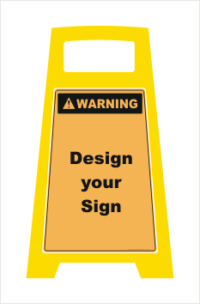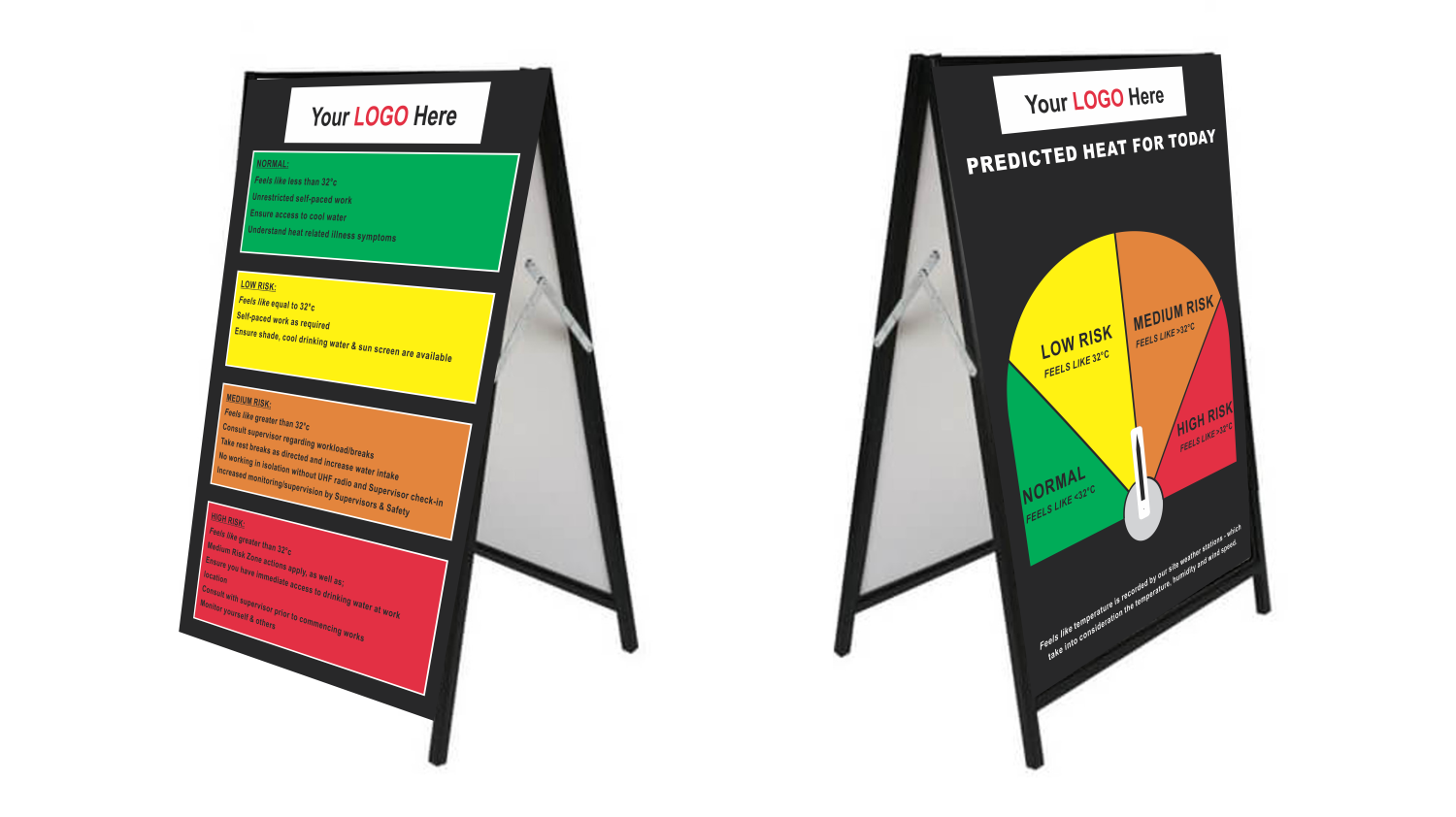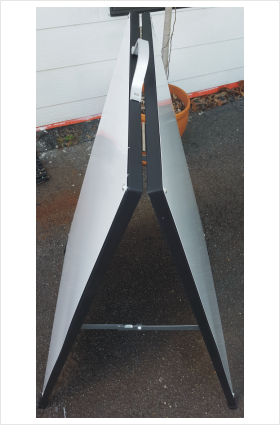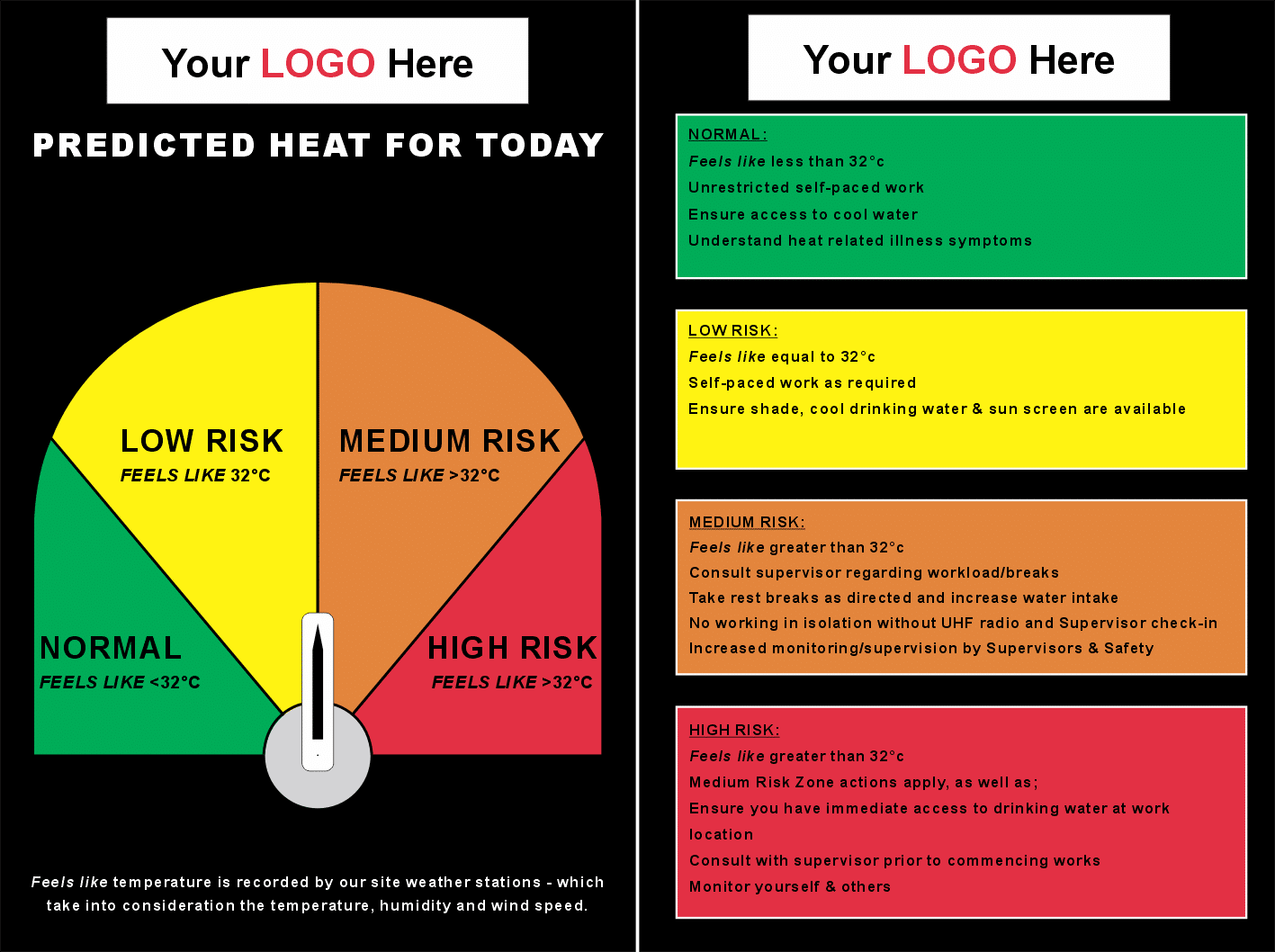Custom Predicted Heat Sign and A-Frame Doublesided A4058
$323.40 inc GST
Custom Predicted Heat Sign and A-Frame Doublesided with a Reflective aluminium arrow mounted on with a lock tight bolt and magnet to hold in place.
Your sign will be UV protected with overlaminate.
Further Australian working in heat facts
Our Custom Predicted Heat Sign blog is HERE
Description
Predicted Heat Sign and A-Frame Doublesided
Add your complany logo to customize
Helping to keep employees safe.
Working in heat can be hazardous and can cause harm to workers. The human body needs
to maintain a body temperature of approximately 37 degrees Celsius.
If the body has to work too hard to keep cool or starts to overheat a worker begins to suffer
from heat-related illness.
This is a general term to describe a range of progressive heat related conditions including
fainting, heat rash, heat cramps, heat exhaustion, and heat stroke.
Some other common effects of working in heat include:
− Heat rash. Skin can become irritated and cause discomfort when working in heat.
− Heat cramps. Muscles can cramp as a result of heavy sweating without replacing salt
and electrolytes.
− Fainting. Can occur when workers stand or rise from a sitting position.
− Dehydration. Increased sweating can lead to dehydration if workers aren’t drinking
enough water.
− Heat exhaustion. Occurs when the body is working too hard to stay cool.
− Heat stroke. Occurs when the body can no longer cool itself. This can be fatal.
− Burns. Can occur if a worker comes into contact with hot surfaces or tools.
− Slips. A worker will sweat more in hot conditions which can increase the risk of slips – for
example, a worker might slip when using sharp tools if their hands are damp.
− Reduced concentration. When working in heat it is more difficult to concentrate and a
worker may become confused. This means workers may be more likely to make
mistakes, such as forgetting to guard machinery.
− Increased chemical uptake into the body. Heat can cause the body to absorb
chemicals differently and can increase the side effects of some medications.
You may also like…
-

Sign Swing Stand 600 x 600 A4008
$75.57 inc GST Add to cart or quote -

Custom roll up banner A4052
$427.76 inc GST Add to cart or quote -

Design A Porta Sign PB66004
$45.73 inc GST Add to cart or quote -

Slippery floor warning banner A4053
$351.89 inc GST Add to cart or quote -

Restricted area Banner A4050
$351.89 inc GST Add to cart or quote -

Porta Board Floor Stand Warning Sign PB66031
$45.73 inc GST Add to cart or quote -

Grass Spike Sign Holder A4012
From: $13.20 Add to cart or quote This product has multiple variants. The options may be chosen on the product page -

Sign Swing Stand 900 x 600 A4007
$79.97 inc GST Add to cart or quote
Related products
-

Drone Aerial Photography portable Sign PB66001
$36.39 inc GST Add to cart or quote -

Workers Below Porta Board sign PB66010
$36.39 inc GST Add to cart or quote -

No Entry Past This Point Floor Sign PB66008
$36.39 inc GST Add to cart or quote -

Danger from above porta Sign PB66005
$36.39 inc GST Add to cart or quote




